How Reporting on ESG can Support your Marketing Efforts
Over the past year, ESG (Environmental, Social and Governance) in both the business and investment world has been a hot topic. While many might believe ESG falls considerably on investments; however, ESG undoubtedly falls under every component within an organization’s value chain. With more and more pressure from the public, governments and non-government organizations to publicly report on sustainability efforts, it has never been a better opportunity for brands to take the initiative to develop sustainability strategies as part of their competitive advantage.
Untapped Customers
Millennials and Gen Z consumers have been the most significant contributors to this recent shift in sustainability reporting. As a result, brands have been left with an open window of opportunities to engage with new customer segmentations with their sustainability effort creatively. Eager to express their beliefs, attitudes and opinions, untapped segments are waiting to be scooped up.
How to identify new segments with your sustainability efforts
- Take your company’s mission and vision statements and align them with UN sustainability goals that speak for your brand. Identifying these beforehand will create a foundation in the direction you wish to go.
- Apply your UN sustainable development goals (SDGs) towards one or more ESG metrics relevant to potential risks in your industry.
- Re-look at your business environment, segmentation, demographics, customer personas and compare and contrast them with your SDGs and ESG metrics and what is known in your market. You will quickly identify common desires your customers seek, but your brand has yet to offer as a method to strengthen your customer lifetime value.
- Leverage what has been discovered and apply it to your communication strategies. Defining and reporting your sustainability goals will go a long way in reaching, attracting, converting and engaging your customers.

New Talent
A big misconception I’ve come across over the years working in startups is that they have a relaxed workplace culture. Yes, typically, there are flexible working hours, collaborative work environments at co-working spaces while sipping endless coffee. While in some cases this is true, some might be surprised to hear startup teams are some of the most hard-working people I’ve ever met.
Why is that? Easy.
Startup founders have established a great sense of pride and compassion for what they do — a purpose.
Having this clear purpose in mind quickly allows the founders to identify key candidates in the hiring process. Ones with similar values, beliefs, attitudes and goals. Much of which the candidates can already see the enthusiasm on the job description.
Now take this same idea in startups and apply it with your company’s ESG strategy. We’ve already identified that Millennials and Gen Z have been the main drivers in sustainable business. These same people are the ones that are looking to engage and work for meaningful companies that pride themselves on similar values — leaving an opening for companies to attract new talent and increase employee satisfaction. Satisfied employees will inevitably increase work productivity, employee retention and overall better results for your company. This goes without saying enthusiastic employees will heighten your company’s talent pipeline for future growth.
Have your HR and Marketing departments come together to brainstorm an employee branding program in relation to your chosen sustainability metrics. An internal employee branding can be very well be used in your external communications to attract eager new talent with similar values.
“People don’t buy what you do; they buy why you do it. And what you do simply proves what you believe” — Simon Sinek

Brand Story
While reporting on ESG in many countries in the world isn’t necessary, it doesn’t mean you should wait till it’s required. Instead, take this opportunity to integrate your ESG reporting as part of your brand story. Consumers aren’t looking just to purchase a product or service; they’re looking to engage with a brand that allows them to experience the story themselves.
One of my favourite brands that has nailed their storytelling while incorporating their sustainability efforts is Kraft Heinz. Growing up as a kid, I always recall having the iconic glass ketchup bottle on my grandmother’s dining table. Life then wasn’t so fast-paced, and sitting and eating together with family were always memorable experiences. Due to the shift in technology, we’ve shifted into a phase in society where we like things fast and forget to treasure little things in life, such as a simple family meal.
Yet, every time I see this 152-year-old brand placed on the table, it reminds me to pause and think of all the great memories and experiences growing up. Why? Because they’ve included their customers within their brand story. A story that the brand wishes for generations to pass down from generation to generation.
Although Heinz did not have ESG reporting while growing up, they knew reporting on sustainability and integrating within their brand purpose, vision, and values will engage consumers like myself to tie a deeper bond with the brand for years to come.
If you’re unfamiliar with Heinz’s story, I encourage you to take the time to read their brand history and their sustainability reports. This will only give you a better understanding of how to incorporate ESG within your own brand story.
Competition is fierce. How will you do your part to set yourself apart from your competitors?
This article was originally published by Nolan Clack, visit his LinkedIn blog and contact him at [email protected].

